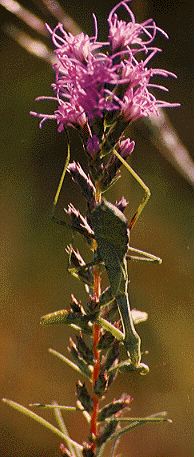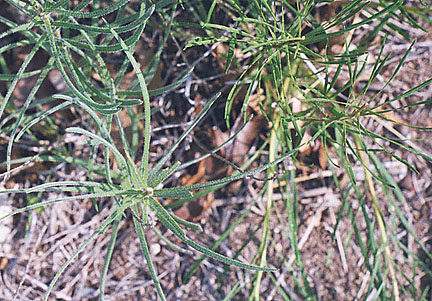Our most common variety is mucronata, quickly recognized by its glossy and reddish stems. Our punctata, by contrast has grayish and strongly pubescent stems. These distinguishing features are not reliable outside of our northern Hays County. To check the most salient distinction requires digging up the bulb-like root (corm). With var. mucronata the corm is spherical, and generally less than 2 inches in diameter. [For a comparison of larger corms from each variety.]
Our two types also exhibit relative differences in the size and pubescence of their seeds (achenes). Var. punctata overall has larger and longer achenes as well as a more prominent covering of hairs. [For a comparison of the achenes.]

|

L. punctata, both grayish and reddish varieties, with tops browsed by deer - through a protecting (?!) fence. |
The two variants also exhibit differences in their flowing behavior. For example, var. punctata plants came into full bloom in mid September, during an extreme drought - no rain for over 8 weeks. Inspection showed that all blooms were on this variety, while immediately adjacent plants of var. mucronata did not appear until two weeks later. At the beginning of November most of the seeds (achenes) of var. punctata were fully mature and being released; only a few heads of var. mucronata had mature seeds.